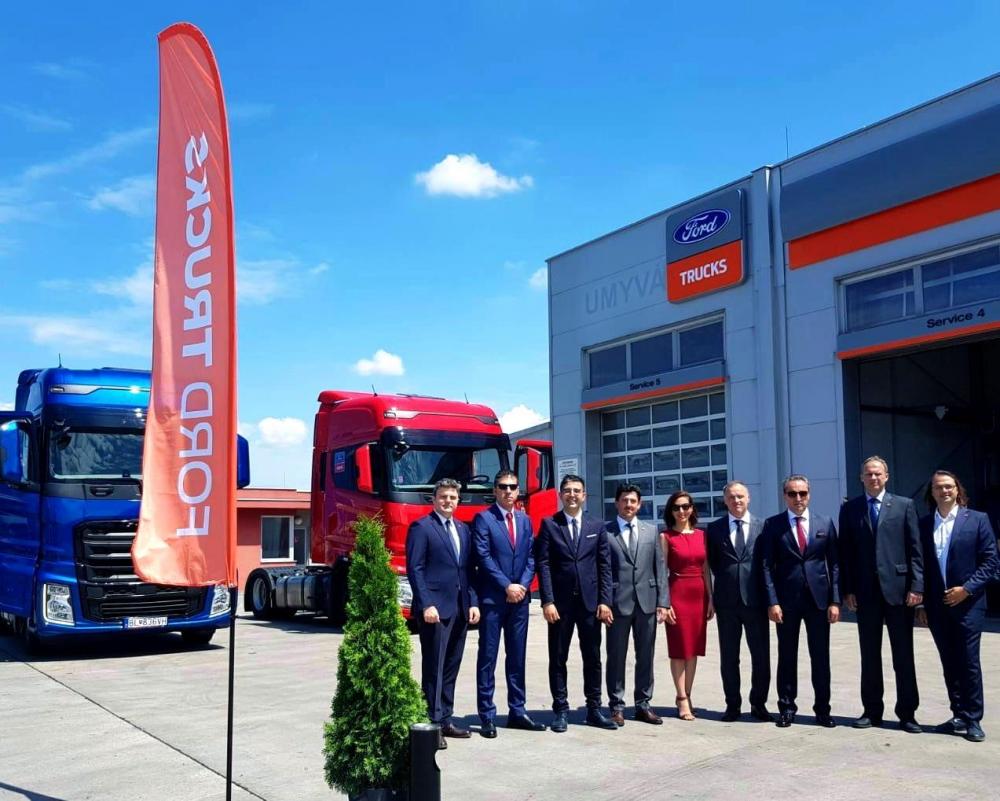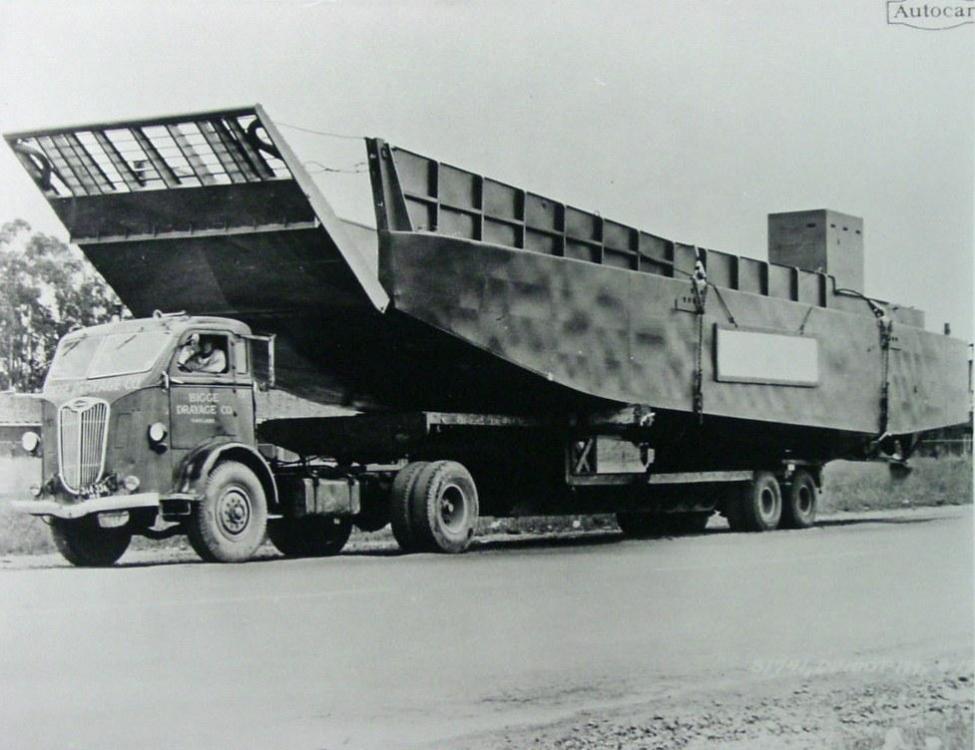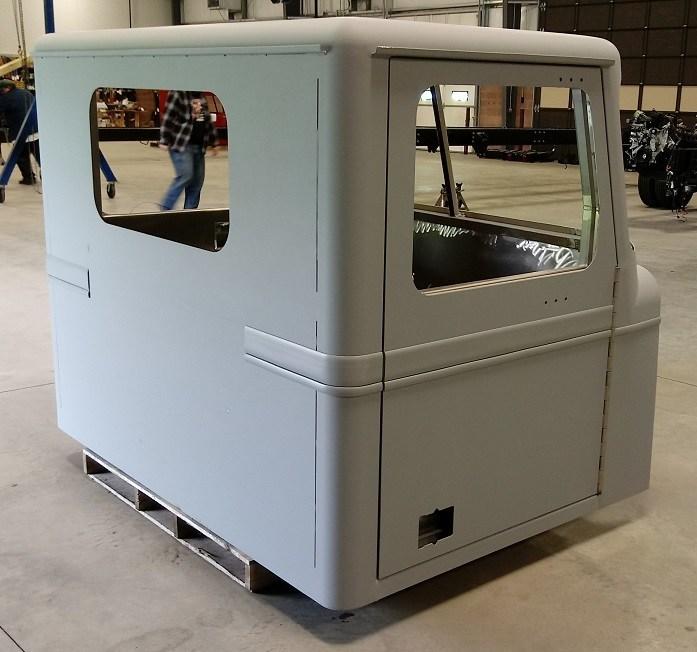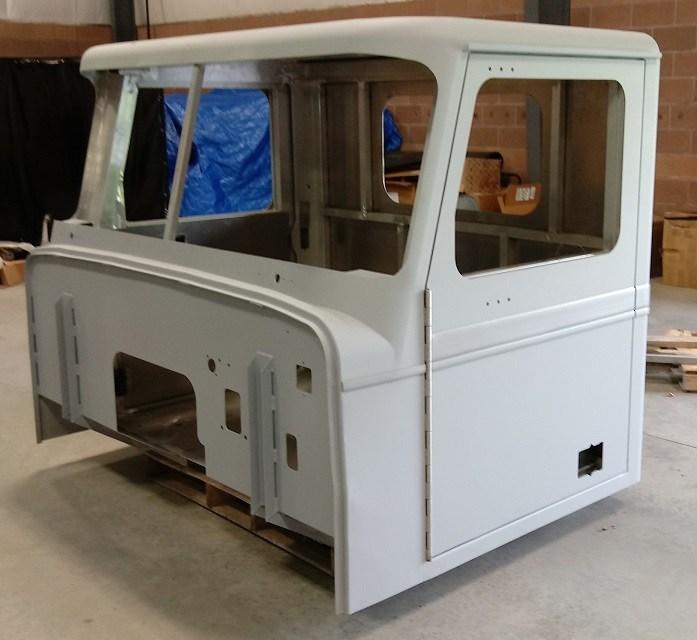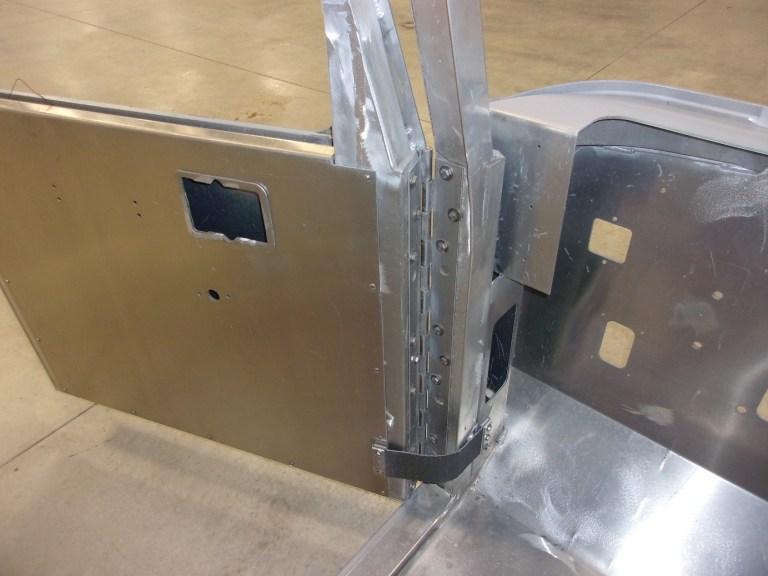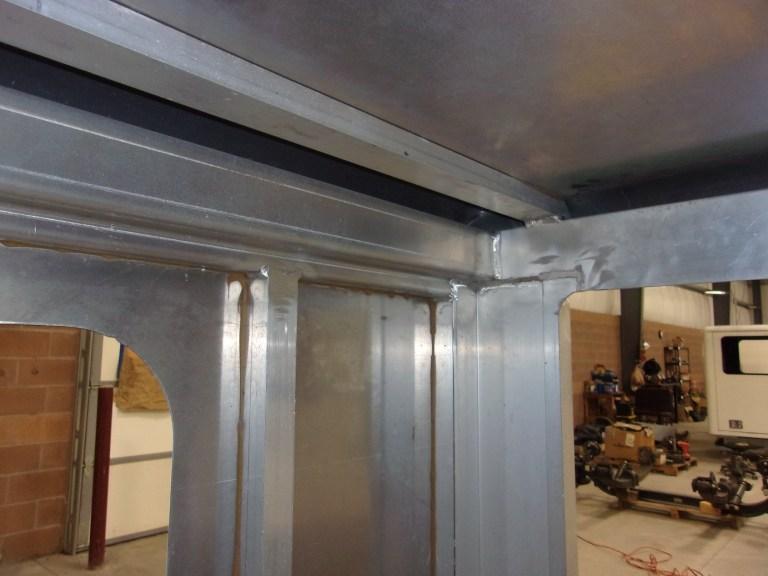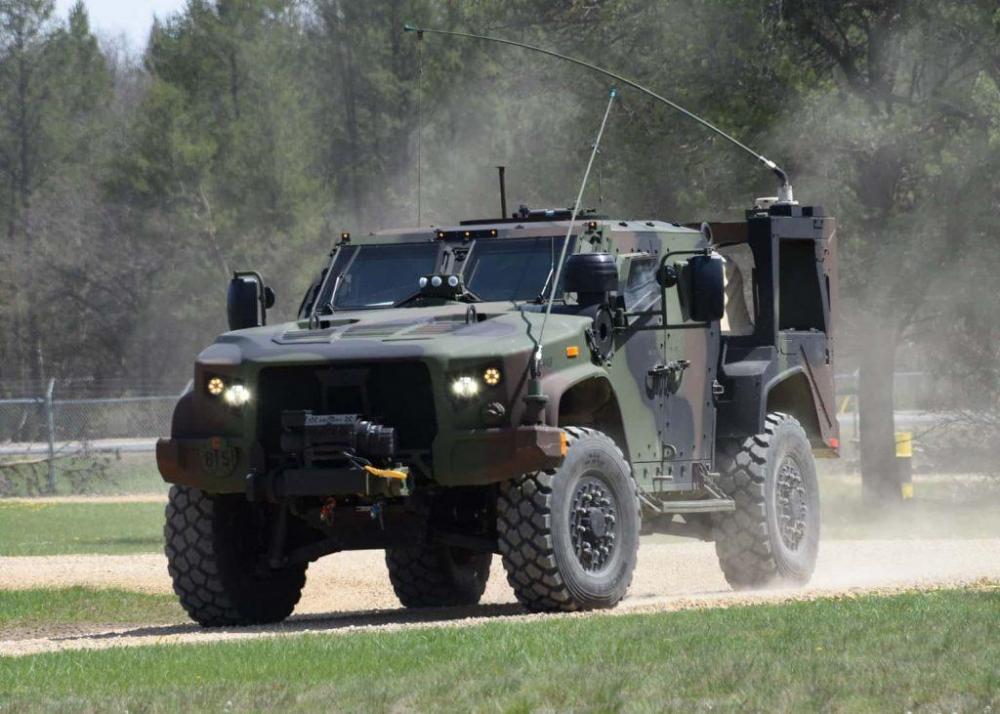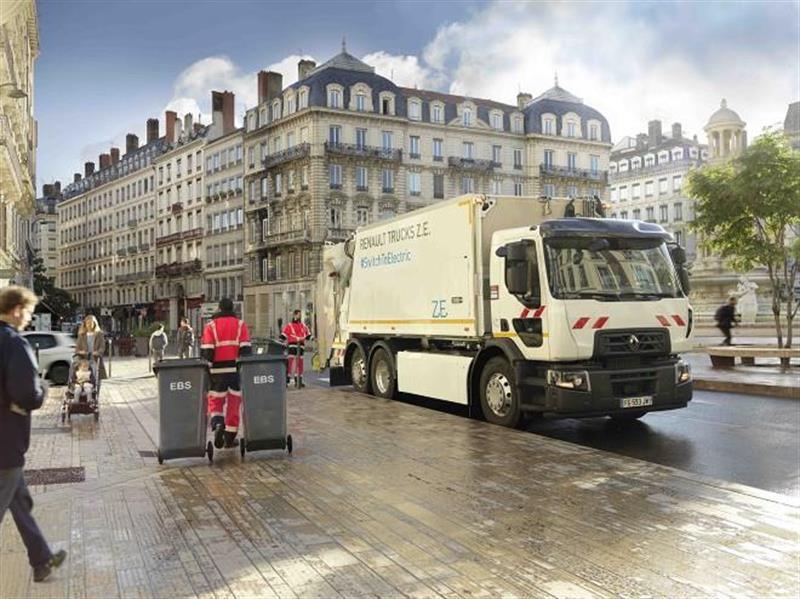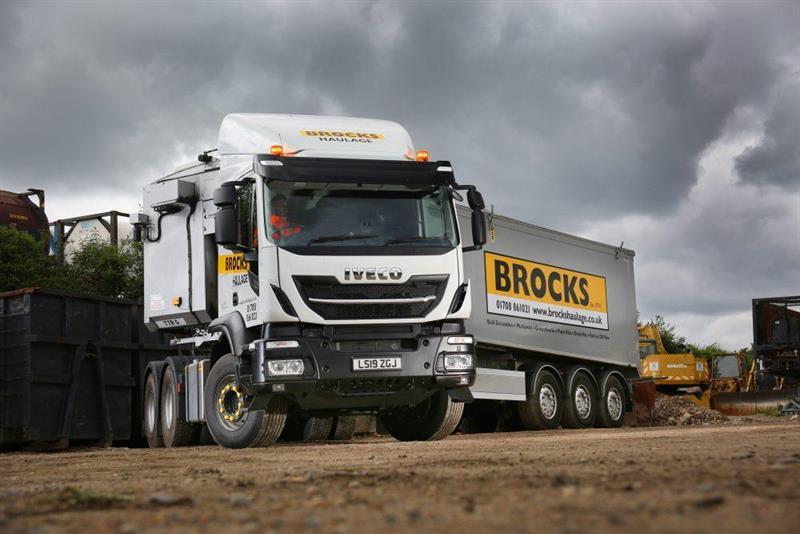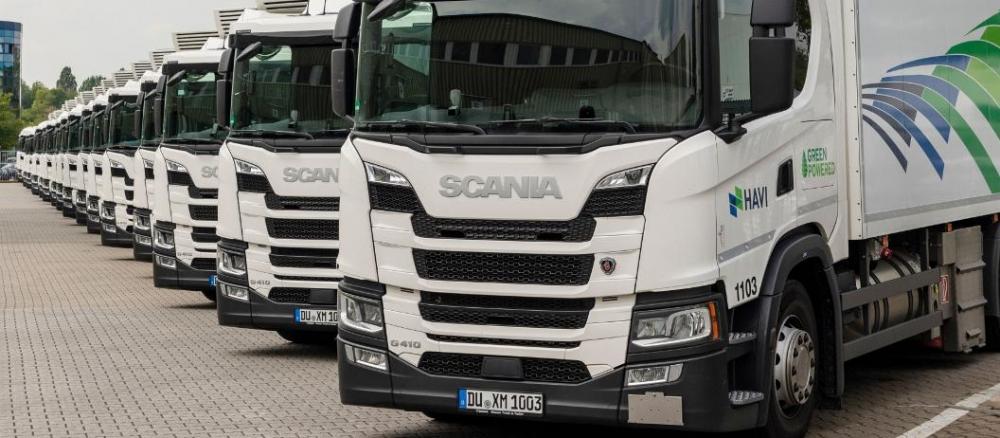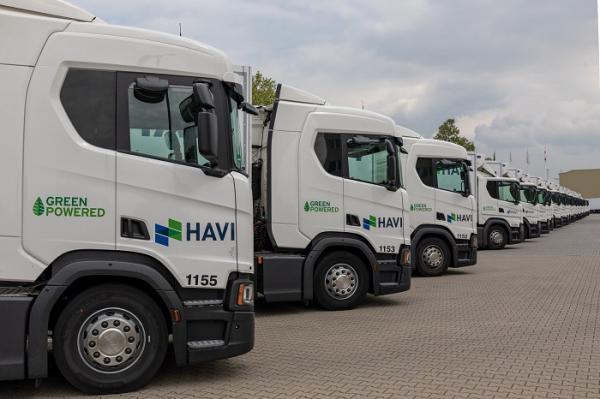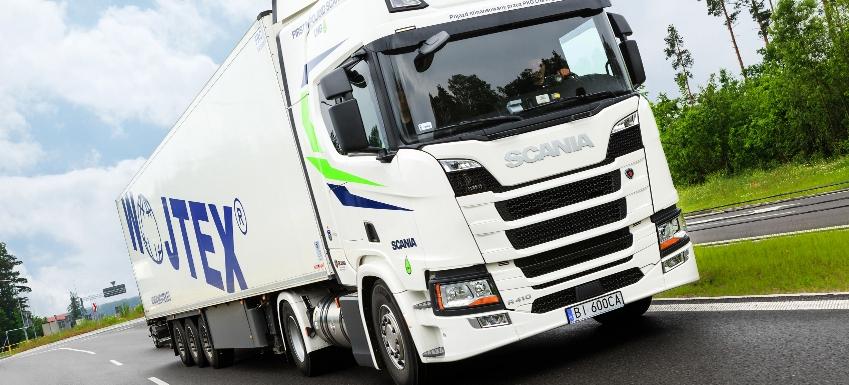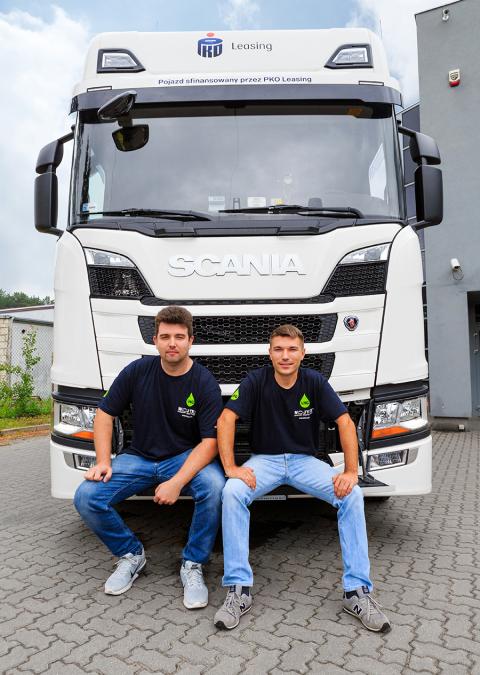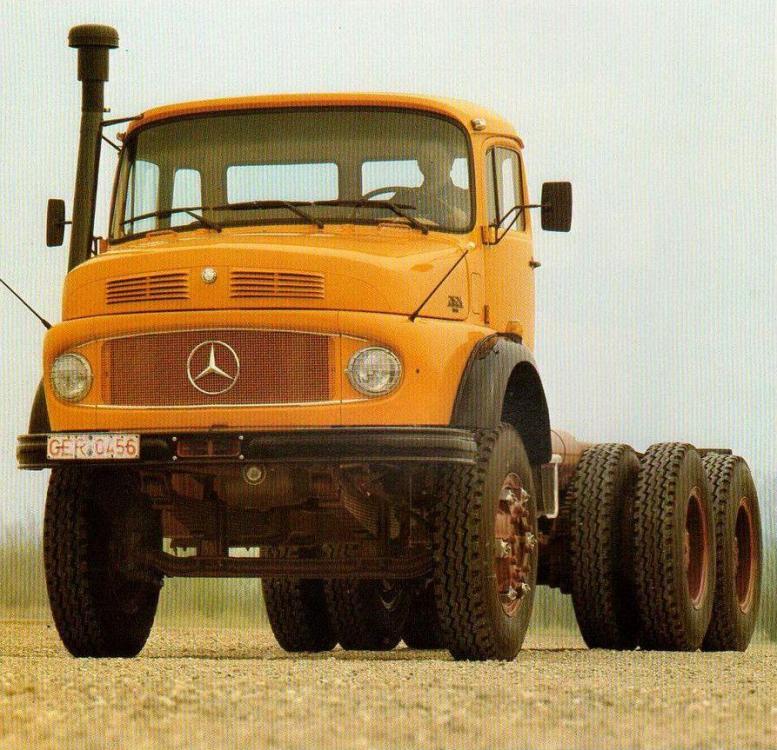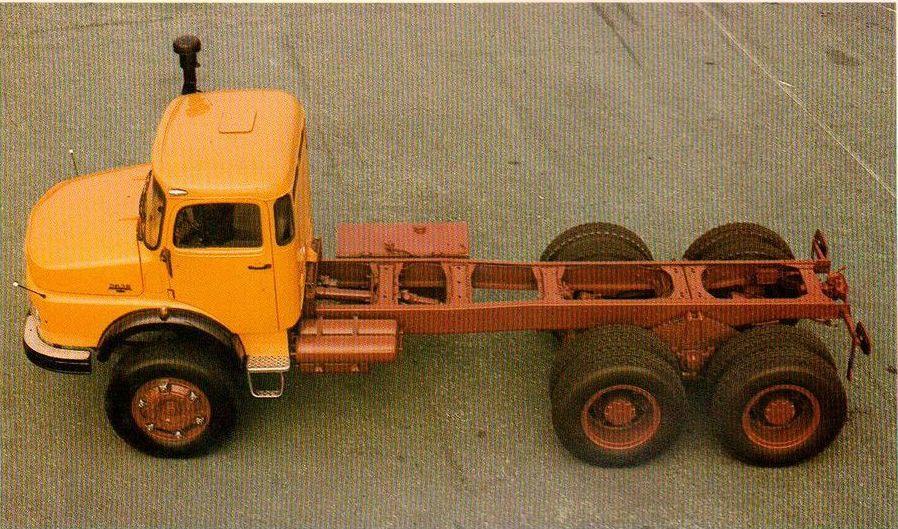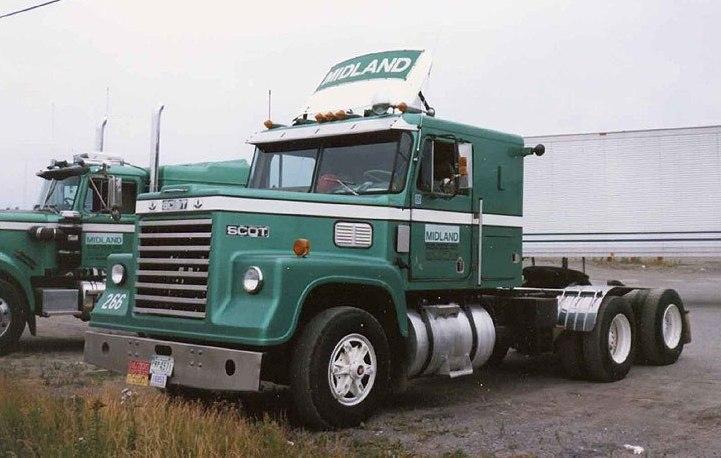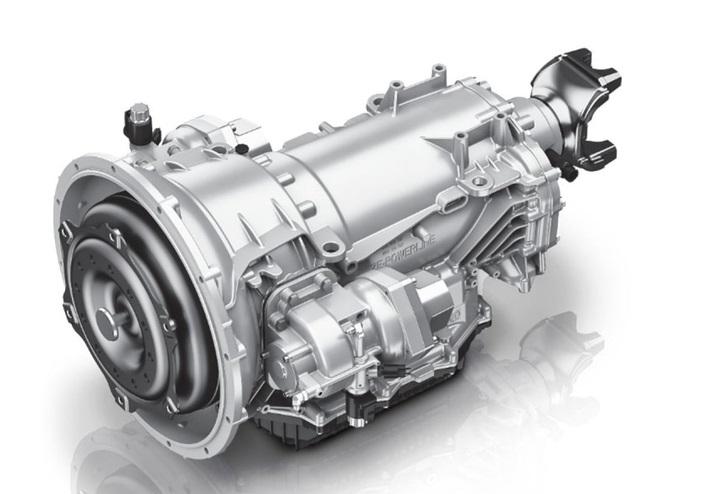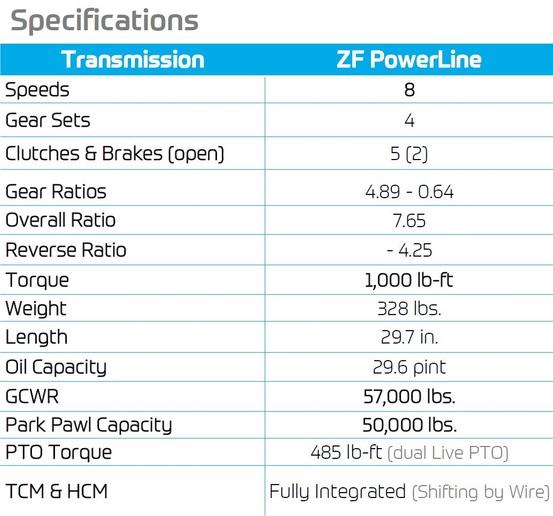
kscarbel2
Moderator-
Posts
18,544 -
Joined
-
Days Won
112
Content Type
Profiles
Forums
Gallery
Events
Blogs
BMT Wiki
Collections
Store
Everything posted by kscarbel2
-
Ford Trucks International Press Release / June 25, 2019 We are growing throughout Europe! Delighted to announce our brand-new facility in Slovakia! .
-
-
Limited edition Diamond T glider kit offering unveiled
kscarbel2 replied to kscarbel2's topic in Trucking News
-
U.S. Army approves JLTV program’s transition into Full-Rate Production Defense Blog / June 22, 2019 The U.S. Army has announced on Friday that Dr. Bruce Jette, Assistant Secretary of the Army for Acquisition, Logistics and Technology, approved the Joint Light Tactical Vehicle (JLTV) program’s transition into Full-Rate Production yesterday. The JLTV is a family of vehicles developed to replace the High Mobility Multipurpose Wheeled Vehicle (HMMWV) for some missions. The JLTV is expected to provide protection for passengers against current and future battlefield threats, increased payload capacity, and improved automotive performance over the up-armored HMMWV variant, which includes an armor package. It is designed to be transported by air or ship. Two- and four-seat variants are planned with multiple mission configurations. According to a statement released by the Program Executive Office for Combat Support & Combat Service Support, the approval follows an Army decision in December 2018 to begin fielding the new platform with the Army’s 1st Brigade, 3rd Infantry Division, Fort Stewart, Georgia, in April. The 1-3 ID became the Army’s first unit equipped with JLTVs in April 2019, after receiving more than 300 vehicles. Fieldings to the Ordnance School, Fort Lee, Virginia, the 84th Training Command, Fort McCoy, Wisconsin, the Marine Corps’ School of Infantry-West at Camp Pendleton, California, as well as the School of Infantry-East, Camp Lejeune, North Carolina, have also been completed. “Thanks to tremendous teamwork across two services on requirements, resources, program management, testing, and other areas, this is a great modernization success story. JLTV shows how teams focused on stable requirements, mature technologies and the right incentives can deliver meaningful capability advancements in a cost-conscious way,” said Jeffrey White, Jette’s principal deputy. The JLTV family of vehicles is designed to restore payload and performance that were traded from light tactical vehicles to add protection in recent conflict, giving commanders an improved protected mobility solution and the first vehicle purpose-built for modern battlefield networks. “Getting an improved capability into the hands of Soldiers and Marines has been our team’s driving focus throughout this program, said Michael Sprang, Project Manager, Joint Program Office, Joint Light Tactical Vehicles. They are why we do what we do, and I’m so proud of the hard-working team that brought us to this point. “We are also grateful for Soldier feedback on new features and enhancements,” he continued. “The Soldiers of the 1st ABCT, 3rd Infantry Division provided valuable input on enhancements such as increased situational awareness, reduction of system noise, a troop seat kit, and a companion JLTV trailer. Their assessments helped bring us all to a successful Full-Rate Production decision.” The JLTV program remains on schedule and on budget to replace a significant portion of the Army’s High Mobility Multipurpose Wheeled Vehicle fleet. The JLTV comes in two variants and four mission package configurations: General Purpose, Close Combat Weapons Carrier, Heavy Guns Carrier, and a Utility vehicle. The U.S. Navy and Air Force also plan to field JLTVs in much smaller quantities. .
-
Transport Engineer / June 24, 2019 Lyon Metropole has taken delivery of a Renault D Wide ZE refuse collection vehicle (RCV), the first pre-production model in the new all-electric range due for launch at the end of this year. The 26-tonne vehicle features an electric engine in the wheelbase, providing the interface between the truck and its equipment. The vehicle has been converted by Faun Environnement, which coupled a hydraulic pump to the standard interface to power the refuse collection system. Faun also altered the hydraulic circuit to reduce noise levels and soundproofed the rear section to confine the noise of falling waste within the trailer. These changes have enabled noise levels to be reduced by 3 decibels. The stop-start operating cycles of RCVs makes them particularly suited to all-electric power, says Renault. As electric vehicles mainly use the engine to slow down, use of brakes and the production of related emissions are both reduced. .
-
Transport Engineer / June 21, 2019 Bulk excavation business Brocks Haulage has taken delivery of the UK’s first 44-tonne Stralis X-Way 6x4 tractor unit, from IVECO. The latest order follows the arrival of the Essex-based operator’s first IVECO trucks, earlier this year, when it added ten Stralis X-Way 8x4 tippers to its fleet. Supplied by dealer Acorn Trucks, the new arrival is powered by an 11.1-litre Cursor 11 engine delivering 474bhp and 2,300Nm of torque. The truck has been fitted with a wet kit for operating Brocks Haulage’s ejector and walking floor trailers. It also has an optional low-level passenger door window for improved visibility of vulnerable road users. The prime mover is designed for ‘last mile’ deliveries to construction sites, combining fuel efficiency and safety technologies with the comfort of the road-going Stralis cab. It has been specified with the ‘Off’ chassis set-up – one of three chassis options – which enables the vehicle to tackle terrain with approaches of more than 25 degrees when collecting and delivering off road. Anthony Brown, operations director at Brocks Haulage, says: “We’ve always required 6x4 tractors for our landfill work, but previously they’ve been sourced from other manufacturers. This time we were attracted to the IVECO unit based on our experiences with the Stralis X-Way rigids – we were keen to try something different.” In addition to waste haulage work, the tractor will be used for low loader work, moving plant equipment ranging from mini-diggers to 35-tonne excavators. .
-
Commercial Motor / June 18, 2019 Classic Scania is the only thing Kevin Mackin thinks is worth driving. .
-
How to make an alternative fuels strategy become a success
kscarbel2 posted a topic in Trucking News
Scania Group Press Release / June 26, 2019 HAVI’s alternative fuels partnership with Scania is making excellent progress in Germany. HAVI will soon operate one of the country’s largest liquefied gas vehicle fleets just six months after introducing its first gas-powered vehicles. HAVI Germany recently switched nine more delivery trucks to gas and is on track to operate 35 liquefied gas vehicles from its Duisburg distribution centre by the end of June. To speed up the low-carbon journey, HAVI is also increasing its own network of filling stations for liquefied gas. Lower emissions and quieter vehicles “The success of our partnership with Scania is reinforcing our position as a recognised sustainability leader in the logistics sector,” according to HAVI. This partnership aims to transfer up to 70 percent of HAVI’s vehicle fleet to alternative fuels by 2021 in several of the European countries where HAVI operates. In addition to lower emissions, the gas-powered trucks are also much quieter. Delivering these benefits is becoming increasingly urgent as the threat of low-emission zones, congestion charges and diesel bans in European towns and cities grows. “For our customers, sustainable supply chains with the lowest possible emissions are becoming more and more important. With our liquified gas fleet, we are contributing towards making our customers’ supply chains and products more sustainable,” says Roland Schmidt, Managing Director, HAVI Logistics, Germany. Growing demand for alternative fuels The demand for sustainable transport solution is growing in the German market. “It is therefore necessary that the infrastructure of filling stations for gas also grows to pave the way for more sustainable transport system,” says Stefan Ziegert, Product Manager, Sustainable Transport Solutions, Scania Deutschland Österreich. “When the production of renewable biogas increases, it can be blended into natural gas, which is more common today. Biogas offers reduction of CO2 emissions of about 90 percent.” Germany’s network of filling stations for liquified gas is still developing slowly. In November 2018, HAVI therefore opened the fourth filling station for liquified gas in Germany and another station is scheduled to open at the start of 2020. “Opening our own stations has been essential to making our alternative fuels strategy a success,” explains Torsten Oldhues, Managing Director, Operations, HAVI. . -
Scania Group Press Release / June 25, 2019 Very little was certain when the new liquefied gas Scania R 410 pulled out of Wojtex Transport’s depot near Białystok, Poland, for its maiden voyage to Spain. Despite months of arduous planning, drivers Łukasz Kubicki and Kamil Zieliński knew the fuelling process would be tricky. Ten days and 7,822 kilometres later, the two returned in triumph, having completed the longest-ever regular transport route using liquefied gas. “I’m the first to admit that this was a very risky decision,” says owner Wojciech Kusnerz. “By making this trip, we’ve shown that it’s feasible to carry out these transports all the way through Europe and I now believe that this is the fuel of the future.” The decision to embark upon this pioneering transport was taken after a painstaking planning process by Fleet Manager Kamil Filipowicz. Having pored over maps, calculated distances and fuel consumption, and having contacted the few liquefied gas filling stations, he felt reasonably confident. And nearly everything went as planned, with fuel stops on the way south in Germany, Belgium, France and Spain. Various filling techniques “We were planning to fill in Rennes in Brittany, but it turned out to be the wrong address and we were instead directed 50 kilometres west, to Gaël. The only real mishap was that the station in Montélimarin in southern France was closed when we got there, and we had to take a chance on continuing our drive into Spain. The truck had by then travelled 930 kilometres on one tank of fuel, but it turned out that we still had 20 percent of the gas left,” says Łukasz Kubicki. Along the route, the drivers gained invaluable experience. For example, they found that fuel prices varied by up to 40 percent and that filling techniques varied from one country to another. Low fuel consumption “It’s good to learn how everything works; that will be very useful for coming trips,” says driver Kamil Zieliński. “All in all, we’re very happy and the truck is wonderful. And the low fuel consumption! We averaged 22.8 kg/100 km and on the last leg of our journey from Berlin to Białystok, we were down to 22.3 kg/100 km.” (Liquefied gas is measured in kilos and is roughly equivalent to litres). On the way south, the refrigerated trailer was loaded with turf for grass lawns, and it later picked up biscuits in France for delivery to Spain. Finding loads in Spain for the return journey is simpler, and the drivers travelled home with their truck packed with oranges, apricots, peaches and blueberries. Planning a 10,000-kilometre route For many years, Wojtex Transport focused almost exclusively on transports to Russia but was forced to shift routes following the imposition of sanctions. Nowadays, Spain accounts for three-quarters of its northbound trade, with deliveries in Poland and Belarus. “We previously had a fleet of 30 trucks but when the Russian business dried up we had to modernise to drive in the EU. We now have 18 trucks, nearly all of them Euro 6,” explains Kusnerz. Buoyed by the positive experience, Wojtex is back on the road for an even longer journey, this time planning to add over 2,000 kilometres more to pass the 10,000-kilometre single route mark. But that in no way deters the drivers. “The shift from diesel to liquefied gas will come, it’s only a matter of time.” “With our previous truck, you got a backache after four-and-a-half hours but not in this new Scania. My thanks to Scania’s engineers,” says Kubicki, with additional praise for the gas propulsion. “The first thing you notice about the truck is how silent it is. In fact, I was half asleep as Kamil drove and thought that we were not moving. The refrigeration unit was louder than the engine.” Owner Kusnerz is also thrilled about his new truck. “We will share all our good experience. That way we can encourage the building of more filling stations. The shift from diesel to liquefied gas will come, it’s only a matter of time.” .
-
GM, Navistar Considered Air Brakes For Silverado Medium Duty Truck Jonathan Lopez, GM Authority / June 25, 2019 General Motors and Navistar considered offering an air brake system on their Medium Duty Class 4, 5, and 6 trucks – the Chevrolet Silverado Medium Duty Chassis Cab Trucks and International CV, GM Authority exclusively uncovered thanks to insider sources familiar with future GM truck programs. The air brake system was originally considered for the 2019 Chevrolet Silverado 6500HD, which currently is the range-topping model in the Silverado Medium Duty range. However, the duo ended up deciding against offering the feature on the vehicles for the time being. Instead, the feature will be reserved for the as-of-yet rumored but unconfirmed Class 7 truck that we have reported the duo to be exploring. The current 2019 Chevrolet Silverado Medium Duty truck line comes with a hydraulic brake system with four-channel ABS from Bosch/Meritor/Wabco. However, the rumored Class 7 Silverado will likely include air brakes as exclusive equipment for the range-topping model. For those not intricately familiar with the difference between hydraulic and air brakes, here’s a quick rundown: the vast majority of vehicles produced today are equipped with a hydraulic brake system, which uses brake fluid to squeeze brake drums or rotors with a friction material, like a brake pad or brake shoe. By comparison, air brakes use compressed air to transmit the braking force to the pad or shoe. Air brakes are primarily used in large commercial vehicles, and are considered preferable to a hydraulic setup for such applications. Not only are air brakes less prone to overloading when slowing heavy-weight vehicles, but they are also more reliable and easier to service, especially as a large system. While brake fluid can leak out and drain away, air is abundant and ever-present, providing an inherent fail-safe. What’s more, an air brake system doesn’t require bleeding like a hydraulic system. For that reason, they would be perfect in a potential Class 7 truck from GM and Navistar. The current Chevrolet Silverado Medium Duty truck line was developed in conjunction with Navistar, and includes the Silverado 4500HD (Class 4), Silverado 5500HD (Class 5), and Silverado 6500 HD (Class 6) models for GM, along with Navistar’s version – the International CV. The models were jointly developed by GM and Navistar, while Navistar handles production of both variants. Last year, GM Authority exclusively reported that GM and Navistar were exploring a possible collaboration for a new Class 7 truck, which would sit at the top of the Chevrolet Silverado range with a Gross Vehicle Weight Rating (GVWR) between 26,000 and 33,000 pounds (11,794-14,969 kilos). Our intel told us that the new Class 7 truck will launch in 2022 and come with the new air brake system, among other exclusive features. This latest rumor follows several other firsts reported by GM Authority, including that the Silverado Medium Duty truck line will receive a new gas engine option in the near future. This new engine will likely be variant of the 6.6L V8 L8T introduced in the 2020 Chevrolet Silverado HD and 2020 GMC Sierra HD. In May, we also reported that GM is looking to expand the Silverado Medium Duty line by adding a new 22.5-inch wheel option to create a dock-height version of the work truck.
-
An air dryer is a wise investment. And, the price of the units with the spin-on desiccant cartridge has become so inexpensive that it's a no-brainer to add one.
-
553GB3266B - head gasket - EN707/END(T)673/END711 with 20 studs 3029-8213C - head gasket - EN707/END(T)673/END711 with 18 studs
-
Zach Brown’s new Anthem
kscarbel2 replied to CaptainCrutch's topic in Modern Mack Truck General Discussion
The wise man is running pre-emissions Series 60 Detroit Diesels in Fitzgerald-produced glider kits. -
Zach Brown’s new Anthem
kscarbel2 replied to CaptainCrutch's topic in Modern Mack Truck General Discussion
The Anthem.......such a hideous looking gaudy/tacky modification of a Mack CH should be a crime. And one has to wonder, did the Swedish foreign aggressor name this product after our national anthem......or theirs? -
Operation Desert Storm Macks
kscarbel2 replied to m16ty's topic in Antique and Classic Mack Trucks General Discussion
During the cold war, the U.S. Army purchased a variety of Mercedes-Benz trucks operating out of its German bases ranging from the G-wagen to heavy trucks. Those "L" series Mercedes trucks in the picture may look dated but are "built like a Mack Truck". . -
Canadian engineering impresses. Beautiful trucks. The A2 conventional (bonneted) integral sleeper, which used the low-cab-forward C model cab, could have been widened a bit to make for a nice full-size "long haul" COE cab. .
-
Trump and Immigration (Illegal Immigrants in the US)
kscarbel2 replied to kscarbel2's topic in Odds and Ends
U.S. cities brace for immigration raids, say they will not participate Reuters / June 21, 2019 WASHINGTON - U.S. cities expecting to be hit by a wave of immigration raids intended to deport recently arrived families who are in the United States illegally said on Friday they would not cooperate with federal authorities. In a call with reporters earlier this week, Mark Morgan, the acting director of the U.S. Immigration and Customs Enforcement, said the agency would target for deportation families that have received a removal order from a U.S. immigration court. The operation is slated to launch on Sunday and is expected to target up to 2,000 [illegal immigrant] families facing deportation orders in as many as 10 U.S. cities, including Houston, Chicago, Miami and Los Angeles. Chicago’s Mayor Lori Lightfoot said she had terminated ICE’s access to Chicago Police Department (CPD) databases related to federal immigration enforcement activities in response to the threat of raids. “I have also personally spoken with ICE leadership in Chicago and voiced my strong objection to any such raids. Further, I reiterated that CPD will not cooperate with or facilitate any ICE enforcement actions,” Lightfoot said. The Los Angeles Police Department said in a series of tweets it would not participate or assist in the immigration enforcement actions. Houston’s Mayor Sylvester Turner noted in a statement the “rich cultural contributions” of the city’s [illegal] immigrants, and said: “The city does not try to do ICE’s job, nor does it try to impede ICE.” Morgan said earlier this week that ICE wanted to deport families who had recently arrived illegally in the United States to discourage more Central Americans from arriving. The number of migrants apprehended crossing the U.S.-Mexico border surged in May to the highest level since 2006. Separately, the governor of Texas said the state was deploying 1,000 National Guard troops to the border after he said more than 45,000 people were apprehended illegally crossing in the past three weeks. -
Trump and Immigration (Illegal Immigrants in the US)
kscarbel2 replied to kscarbel2's topic in Odds and Ends
Now the government has gone from calling them "undocumented immigrants" to describing them as "unlawfully present immigrants". However, most still call them illegal aliens or illegal immigrants.....i.e. what they are. Ms. Lightfoot should be arrested for breaking the law. -
Trump and Immigration (Illegal Immigrants in the US)
kscarbel2 replied to kscarbel2's topic in Odds and Ends
Chicago Mayor Vows to Shield [Illegal] Migrants From Raids by U.S. Agents Bloomberg / June 21, 2019 Chicago Mayor Lori Lightfoot condemned the Trump administration over planned raids of [illegal] migrant communities and said she had ordered police to cut federal agents’ access to databases related to immigration enforcement activities. “We are all aware of the threat from President Trump regarding raids by ICE, and in response, Chicago has taken concrete steps to support our [illegal] immigrant communities,” Lightfoot said on Friday, referring to U.S. Immigration and Customs Enforcement. Lightfoot, who took office in May, said she had told ICE officials that the Chicago Police Department “will not cooperate with or facilitate any ICE enforcement actions.” “Chicago will always be a welcoming city and a champion for the rights of our [illegal] immigrant and refugee communities,” Lightfoot added. President Trump has directed ICE agents to conduct a roundup of [illegal] migrant families that have received deportation orders, an operation that is likely to start in large U.S. cities on Sunday. In a statement on Friday, the agency said that “due to law-enforcement sensitivities and the safety and security of U.S. Immigration and Customs Enforcement personnel, the agency will not offer specific details related to enforcement operations.” “As always, ICE prioritizes the arrest and removal of unlawfully present [illegal] aliens who pose a threat to national security, public safety and border security,” ICE added in the statement. -
Jim Park, Heavy Duty Trucking (HDT) / June 20, 2019 Medium-duty truck builders will soon have a groundbreaking new transmission to add to their data books, and heavy-truck makers will have more steering assist options to offer customers. German automotive supplier, ZF Friedrichschafen AG, recently demonstrated these and other nearly-market-ready technologies at press gathering at the Transportation Research Center near East Liberty, Ohio. The PowerLine 8HP torque-convertor automatic transmission is the big news here. It's hardly new though. It was officially introduced to the North American market exactly one year ago in Indianapolis. But more than 15 million copies of this transmission have been operating in passenger cars (fitted with the scaled-down 8AP version) across Europe and Asia since 2007. The 8HP is a "muscled-up" version of that same platform. ZF changed little in scaling it up for service in Class 3 to baby 8s save for building in some extra durability. ZF says the transmission should be on the road next year but wouldn't say which of the major truck makers would be first to market with the PowerLine 8. ZF did say, however, that this 8-speed will cover all of Allison's 1000, 2000 Series automatic transmissions and a good chunk of its 3000 Series transmissions. "With one product, we cover about 90% of our competitor's volume," said Andre Kohl, ZF's North American business development manager. It boasts some impressive specs and features, but performance will likely be its biggest selling feature. Reporters had the chance to drive two trucks equipped with the PowerLine 8, and one "baseline" truck for comparative purposes. It's impressive. Starting out, it will launch in first or second gear, depending on the load, and it will skip-shift when the opportunity presents itself. It has a neutral idle feature that disengages the torque convertor to take the load off the engine when the truck isn't moving. Gear ratios range from 4.89 in first to 0.64 in eighth, which is like double or maybe triple overdrive. There's plenty of latitude in the eight cogs for any driving condition, and ZF did say that fuel economy was a prime driver in the engineering process. "The PowerLine is at least — not up to — at least 10% better on fuel than any competitive product in same application," said Kohl. The transmission boasts 30% better acceleration than other transmission and a 45% weight advantage -- the PowerLine 8 weighs a paltry 328 pounds. Kohl also pointed out that the transmission, as it sits today, is ready for what the OEMs will be asking for in terms of meeting the pending GHG Phase II regs. It's ready for integrated stop/start assist which shuts off and starts the engine while at traffic lights, etc. "We incorporate an accumulator inside the transmission to help with restarting," he said. "This will help truck makers comply with GHG reduction rules in the future with engine stop/start technologies. When they are ready for it, we already are." It also features twin torsional dampers, which will help with downsped powertrains. These are more common to on-highway Class 8s, but Kohl says downspeeding is coming to medium-duty. There's also a lock-up clutch in first gear for improved energy efficiency. With the PowerLine 8, the torque convertor is used only to launch and stop the truck. Driving the PowerLine 8 proved pretty well everything Kohl said during his presentation. You literally cannot feel the transmission shifting gears. You can tell the shifts are happening based on the sound of the engine, but they are very quick and really smooth, and there's never a lag in torque as you accelerate. There's a short off-road loop at TRC that features a hill with a 23% grade. One of the trucks was loaded with 20,000 pounds of steel dunnage for a gross weight of about 37,000 pounds. The truck walked up that grade from a full stop at the bottom, and from a full stop mid-way up the hill (the hill-start assist feature came in handy that time). It even managed an upshift from first to second on one of my runs up the hill with full throttle applied right from the start. On the maintenance side you get “best in class” extended oil-change intervals and Kohl said the oil filter is good “for life”. It also features a fully integrated control units inside the casing, with no external sensors or harnesses. That should help with durability. Building on ReAX With advanced driver assistance systems now gaining popularity, ZF first introduced its ReAX assisted steering system in March 2015 at the Mid-America Trucking Show. Actually, it was TRW that introduced ReAX, but ZF acquired TRW later that year. At any rate, ReAX was one of the first such systems introduced to the heavy truck market, and the company has now developed a suite of assisted steering applications that offer drivers safety and convenience. In case you missed it, ReAX is an electric motor integrated into the hydraulic steering gear that provides a boost to the input torque supplied by the driver. It can be controlled to modulate steering force when maneuvering at low speeds and stiffened for highway driving. While that functionality is still present, ZF will soon offer a lane departure prevention function along with a haptic warning to help avoid blind-spot collisions. Called OnTrax Lane Keeping Assist, the system uses a forward-facing camera to determine the truck's lane position. If the truck drifts toward the lane markers without using the turn signal to indicate a lane change, the system will gently counter steer the truck back into the lane. I tried it on the 7.5-mile oval test track at TRC and found the nudge was certainly noticeable but easy to override — if a lane-change was in fact my intention. This version of OnTrax LKA will not center the truck in the lane, so the driver has to take control of the wheel after the counter-steering event to prevent the truck from heading toward the opposite side of the lane. With the addition of a few radar sensors, LKA is turned into a blind spot detection system called Lane Change Assist, providing drivers with a haptic warning if he or she is about to turn into an already occupied lane. The system shakes the steering wheel with much the same feel as driving over rumble strips. ZF said it opted for the haptic warning rather than an audible warning because of the proliferation of annoying beeps and bells and buzzers now cluttering the soundscape in most modern trucks. This version simply warns the driver, it doesn't prevent the maneuver. The basic Lane Keeping Assist system will be in production next year with an unnamed OEM, while the lane change assist feature is still a couple of years off because the sensors used aren’t yet in production. ReAX is also capable of full steering control in an autonomous driving situation. Reporters got a ride in a day-cab International LT that drove a simulated course through a truck terminal using GPS to guide the truck on its predetermined course. It started, stopped, turned right and left (using turn signals) on commands from a Pro AI controller. This configuration was equipped with two ReAX steering units, one on the steering gear and the other mounted on the steering column. The second was in place for redundancy. All the technologies presented by ZF will be available through OEM channels within the next year or two. I suspect though that by the time they come to market there will be additional functionality to report on. ZF has a history of innovation, and they won't be sitting still on this stuff for long. .
-
Because that was the norm in Europe at the time, owing to it's advantages. Scania's feeling to this day is that individual cylinder heads have several advantages. A cylinder head covering more than one cylinder imposes restrictions on the maximum potential for achieving efficient intake and exhaust flow, because provisions for cooling and clamping compromise cylinder head design. Since individual cylinder heads don't suffer from these obstacles, the head design can be optimized for rapid gas flow to achieve maximum fuel efficiency. And regarding maintenance, it's much cheaper and faster to remove and reinstall an individual cylinder head, than a single cylinder head covering two to six cylinders.
-
GM seeks continued exemption from Takata airbag recalls Sarah Kominek, Automotive News / June 20, 2019 General Motors filed a petition with NHTSA for the fourth straight year to avoid recalling millions of vehicles with Takata airbag inflators. The petition was posted in the Federal Register on Wednesday by NHTSA but was originally filed by GM on Jan. 11, 2019. The automaker requested the administration exempt GM from recalls that would require the company to replace the airbag inflators in more than 6 million trucks and SUVs. In a 2015 agreement with the U.S. government, Takata declared GM's front passenger inflators defective. Takata eventually filed for bankruptcy and in 2018 its safety products business was acquired for $1.6 billion by Chinese-owned Key Safety Systems, which has since renamed the business Joyson Safety Systems. At least 24 fatalities and about 200 injuries have been blamed on the Japanese company's malfunctioning airbag inflators, which exploded during accidents and spread shrapnel into passenger compartments. After NHTSA extended rulings on previous petitions, GM said it investigated and analyzed long-term performance of the inflators and found they "do not present an unreasonable risk to safety." GM said in the recent petition that the Takata inflators provided to the automaker "are not used by any other original equipment manufacturer" and are safe because of their unique design features.
-
Yes, born from Mack’s long time relationship with Scania, and the old man’s idea to gain economy of scale via such an agreement.
-
Paul, there are quite a few companies offering DPF (diesel particulate filter) retrofit solutions. In the UK, for example.
-
The first Scania V8 was an ENDT865/866 with individual cylinder heads.
BigMackTrucks.com
BigMackTrucks.com is a support forum for antique, classic and modern Mack Trucks! The forum is owned and maintained by Watt's Truck Center, Inc. an independent, full service Mack dealer. The forums are not affiliated with Mack Trucks, Inc.
Our Vendors and Advertisers
Thank you for your support!


